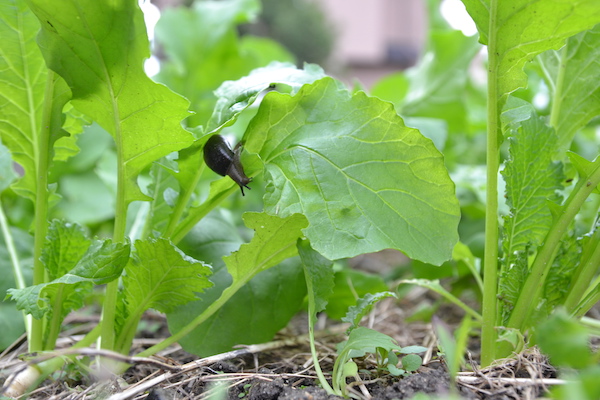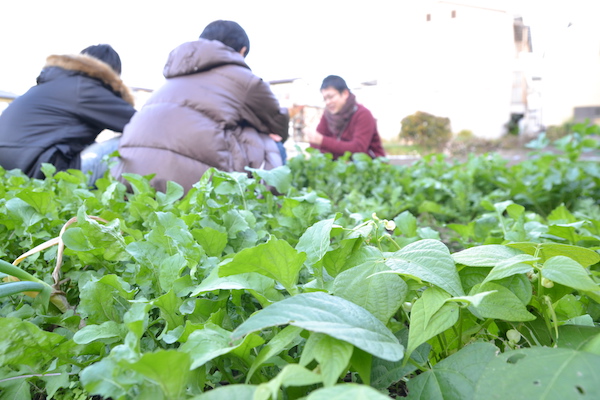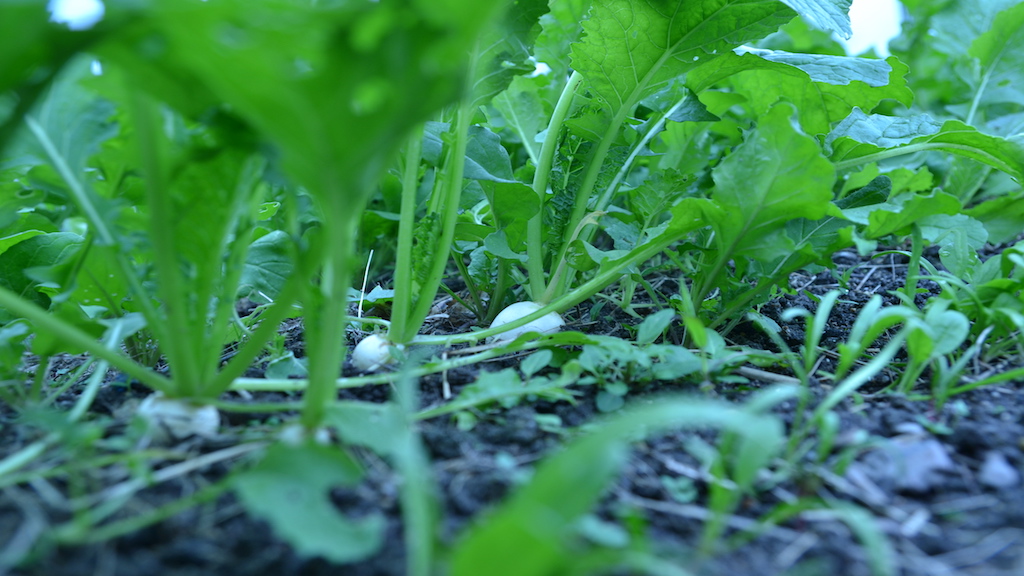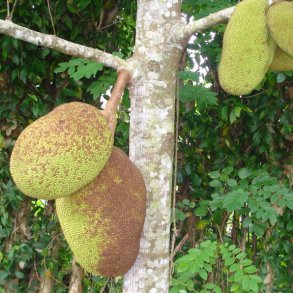By Shiro Yoshihara and Yuko Yoshihara for Enlivening Edge Magazine
“What are the purposes and roles that plants and insects have in the soil?” “What else could we learn from ‘natural’ gardens?” My wife and I had made a special “natural” garden near our home. It was operated from the concept of ‘Natural’ Farming in Japan (defined below.) Those were our first questions. Then we asked “How can we apply the principles of ‘natural’ farming to organizations?”
This article explains how we applied those principles to promote the evolution of our consulting client’s organizations. We hope anyone who reads this article will develop some interest in ‘natural’ farming, and get some insights that could help them change and evolve any current difficult situation they might be experiencing.
Introduction to the concept of ‘natural’ farming
There are several definitions of ‘natural’ farming in Japan. In our garden, we use native species of plants to best facilitate continuing generations of those plants. We used leaf mold, oil cake and rice bran only at first, after we plowed to replace surface soil with subsoil for circulating nitrogen and carbon in the soil. After plowing, the soil gradually changed to the ‘natural’ soil that plants, insects, and soil microorganisms can live in organically. “Organically” means “live as they are, connected with each other.”
We don’t have to use any fertilizers or any chemical products that stop the natural cycle. We also don’t have to water because the subsoil can store rain.
We use companion-planting methodology, to make use of the beneficial mutual relationships of plants based on their specific characters and roles. We also put old leaves on the surface of the soil to keep it in good condition for plants, insects, and soil microorganisms
What is the purpose of plants and insects in the soil?
We have observed that the plants and insects in our natural garden have natural mutual relationships with each other in ‘Natural’ soil. For instance, cabbages give caterpillars their outer leaves to be eaten, and then caterpillars produce waste that is compost. The compost from the caterpillars enables cabbages to mature and thus produce their own seeds for continuing their next generations. Caterpillars also do this by growing into butterflies who put their eggs on the plants, helping to pollinate the cabbages.
It seemed that plants and insects were not enemies but good partners to continue their lives with each other. So we thought the purpose of plants and insects seemed to be to continue their lives on the earth.

Natural mutual relationships between plants based on their specific characters and roles
All plants have their own specific characters and roles. If we know about them, and if we prepare the ‘natural’ soil and other good conditions, then we can make use of these roles to enhance the natural mutual relationships just described. This results in plants and insects continuing their lives without too much additional human effort after planting seeds.
Here are some examples: The strong smell of basil can keep away the stink bugs of green soybeans to some extent. Green soybeans can deliver nitrogen from the air into the soil, and basil plants near the green soybeans can use the nitrogen for their own lives. The specific character of green onion is that it can protect plants from viruses in the soil. That’s why we plant a lot of green onions in our natural garden!
Natural mutual relationships based on plants’ specific characters and roles, or “companion-planting,” is one of the important principles we learned from our ‘Natural’ garden.
What can we learn from a ‘natural’ garden?
Summarizing the principles of ‘natural’ farming:
- Natural soil that plants, insects and soil microorganisms can live in organically
We regard the soil as the most important condition to create a ‘natural’ garden. We don’t use chemical fertilizers in the soil, because those fertilizers destroy the natural ecosystem. All we do to the soil is plow to replace surface soil with subsoil for circulating nitrogen and carbon in the soil.
- Natural mutually beneficial relationships among plants, insects and soil microorganisms
Such relationships are based on the specific characters of plants, insects and microorganisms. By knowing their characters, we can deeply understand their roles in the natural garden, roles resulting in mutually beneficial relationships.
We don’t have to use chemical fertilizers, herbicides and insecticides for plants. They can perform their roles in the garden without much support by human beings. Then natural mutual relationships can happen spontaneously. They don’t need any power hierarchy like the relationship between boss and subordinate for realizing natural mutual relationships.
How can we connect the principles of ‘natural’ farming to organizations?
The principle of natural soil teaches us the importance of having natural structures in organizations, such that all members can live and work organically. We don’t need any unnatural hierarchies like power hierarchies that destroy members’ autonomy.
The principle of natural mutual relationships deriving from character and roles shows us the importance of our generative mutual relationships and collaborations in the organization based on deep understanding of the characters, strengths, and purposes found among us. If we understand those characters, strengths, and purposes well, we can make and revise appropriate roles guided naturally by the evolutionary purpose of the organization. Then generative mutual relationships and collaborations happen in the organization.

How have we applied these principles to specific organizations?
We think it is necessary for us not only to understand the principles of ‘natural’ farming via our brain but also to feel the principles by heart. So we started a ‘Natural’ Farming Retreat to bring the principles of ‘natural’ farming into our client’s several organizations.
We invited people from our client organization to our ‘natural’ garden. In this retreat, participants easily felt the autonomy of plants and insects functioning well without any orders from a boss. They also learned the reason for the autonomy, through learning the system of ‘natural’ farming from us. After seeing and sensing the flow of the energy in the soil, participants harvested plants and ate them.
They were surprised at the perfect natural taste of the plants. I asked them why the taste got to be so good, and where is the CEO that is located on the top of the garden’s power hierarchy? They laughed at my question. To find that there is no power hierarchy in the ‘natural’ garden is a great learning to help them make natural structures for their organizations.
One of our clients said after the retreat:
“At first, all I could see was just green! But I gradually came to see every plant and insect through knowing their role. Though I didn’t like insects at first, I felt appreciation for them after I knew their roles in the soil. In my organization, I also would like to understand each member’s character, strength, and purpose more and more, for their happy careers.”
His learning of the importance of understanding his members’ character, strength, and purpose is a great learning to facilitate natural mutual relationships. He also said that he couldn’t ever forget this experience.
At the end of this retreat, participants planted seeds for their next visit to the ‘Natural’ garden. It is important for them to continue to visit a ‘natural’ garden to realize the principles gradually.
That is one story of our project promoting the evolution of our clients.
Further Exploring ‘Natural’ Organizations
Natural Organizations Lab would like to become an organization making use of the principles of ‘natural’ farming. We are calling organizations making use of the principles, ‘natural’ organizations. This is the origin of our organization’s name, ’Natural’ Organizations Lab.
Through our projects of operating ‘natural’ farming and having ‘natural’ retreats in Japan, we’ve realized these four profoundly important characteristics of ‘Natural’ organizations.
・ ‘Continue Life” is a fundamental element of evolutionary purpose.
・ Natural Structure of organizations enable all members to live “organically.”
・ Natural mutual relationships–based on deep understanding of our own and others’ characters, strengths and shared purposes–enable us to make and revise appropriate roles guided by the evolutionary purpose of organization.
・ There are no competitors, simply potential good partners, from the viewpoint of our evolutionary purpose.
We are going to continue our projects all over the world, for evolving organizations from the perspective of ‘Natural’ farming. We are also going to continue to explore being ourselves a ‘natural’ organization that perfectly embodies the principles of ‘natural’ farming and other natural resources. We look forward to sharing our new findings.

Shiro Yoshihara is an evolutionary practitioner with organizations, teams, and individuals. Adding his advisory service to the organizations, his wife, Yuko Yoshihara and he started their initiative of evolving the world making use of the learnings from Natural farming. Their project name is Natural Organizations Lab Project.

Yuko Yoshihara is learning about ‘Natural’ farming intensely through practicing ‘Natural’ gardens. As an evolutionary practitioner with organizations, team, and individuals, she and her husband, Shiro Yoshihara, started their initiative of evolving the world making use of the learnings from Natural farming. She is also a custom-made shoemaker for women.




